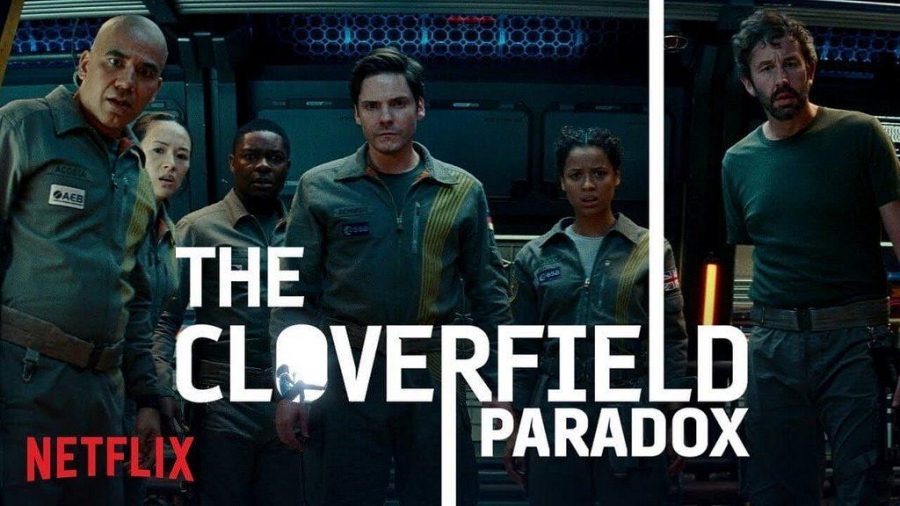On Feb 4, the Eagles narrowly beat the Patriots in the 52nd Super Bowl. Minutes later, “The Cloverfield Paradox” was released on Netflix.
This Netflix original is the third in the Cloverfield series, and it may be the next step in the history of streaming. What does this mean for other big box studios? Bad Robot, the producers of the Cloverfield series, are still the owners of that intellectual property, but they have chosen to release a movie only on Netflix, avoiding a theatrical release. Think of it as a straight to DVD kind of deal.
The only thing that makes this premiere different is that it is readily available to just about anyone. As of 2017, Netflix hit the 100 million subscriber mark, not including users on shared accounts, then quickly surpassed it, meaning its services are ubiquitous.
With the world shifting towards on-demand shows and similar programs, we could be seeing a low tide for the movie theater, especially with the rise of ticket prices. After the dollar theater in Sugar House was acquired by Cineplex, the general admission ticket rose to $9.50. Alongside that, you might choose to buy snacks. Let’s say you go alone and buy a large popcorn and soda. The total will come to about $22. Then you go sit down for about an hour or two, have your snacks and enjoy the film. Even if you didn’t buy snack foods, that’s still $10 dollars for a few hours of entertainment. Whereas, a Netflix subscription is only $8 a month. In the comfort of your own home or on the go, you can watch a number of movies and TV shows, not confined to the dozen or so films cycling through the cinema. So why do we still go to the movies?
That’s simple. It’s the experience. There’s something about the silver screen that catches our attention. The big high definition action, the suspenseful 3.5 surround-sound, the community aspect of going to the movies. It’s the ability to get out and do something. Like staged theater, the movie theater will never actually die, but with the rise of ticket prices and quality of streaming services originals, we could see fewer people going to the movies on a regular basis.
It will all be determined by what film producers decide to do, whether they choose to go straight to Netflix, Hulu, Amazon Prime, etc. or stick to the silver screen initial release. Maybe “The Cloverfield Paradox” was like seeing lightning strike Bigfoot — exciting to see but never to happen again.
The Super Bowl commercial for “The Cloverfield Paradox” was the only marketing Bad Robot did for the film, and it’s probably all they needed — 103.4 million people watched the Super Bowl this year. With other Netflix Originals, we don’t get nearly as much marketing.
Netflix paid $50 million for the rights to “The Cloverfield Paradox,” while the production cost for the movie was $45 million. This made the film profitable, but the average price of a 30 second Super Bowl Commercial is about $5 million. This means the movie was cutting it close to breaking even. If they had chosen to go the more traditional route, perhaps they would have made a better profit.
This risk may be tied to the lack of faith Bad Robot had in the film — it only got a 17% approval rating on Rotten Tomatoes. By leaving it on Netflix, Bad Robot avoided costly marketing and made you feel okay about watching an okay movie. Instead of spending $10 or more to watch it, it basically cost nothing. What this could lead to is higher quality movies staying in the theater, and B-movies premiering on Netflix and other streaming services.
If other producers choose this route, then would we see previews before movies? Would they downgrade to trailers on TV and Youtube like Netflix does for their originals?
It may end up being a win-lose scenario. In the movie theater, a film is there for a limited time, so if you want to go see it, you need to get there. On Netflix, you can view it when convenient. Since there are endless choices, unless the movie or show is fantastic you may never watch it.
I don’t think we will see the death of the movie theater experience, we might just see a change in quality and output. More modern B-movies — low budget movies — may be seen on streaming services, and it all depends on what you consider a B-movie to be. If you would like some suggestions and more information on B-movies, check out A Crash-Course on Netflix B-Movies.
I believe in an extreme circumstance, movie theaters will become a fringe experience, where they have select showings like you would see at the Tower Theater. Movie theaters will not disappear. In the meantime, we’re going to have to watch out for the next Cloverfield movie, which is slated to come out late 2018, and see if they go for the silver screen or the home screen.


